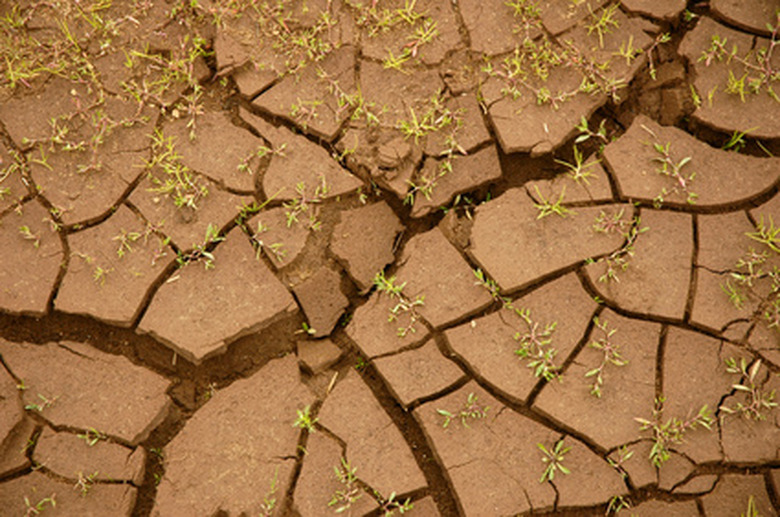3 Main Types Of Soil
Many different combinations of soil types can occur, but the main types of soil boil down to sand, clay and loam. The texture of soil is determined by its percentage of these three substances. It's rare to find a soil that is 100 percent of any one type–most soils are composed of all three types. Before you start a garden, it's wise to learn about the soil on your property.
Sand
Common in areas near the coastline and in deserts, the sand soil type is characteristically grainy, and feels rough when you touch it. Sandy soil drains water quickly. While most plants do best in a well-draining soil, soil that has a high percentage of sand drains too fast and also contains few nutrients that plants need. Exceptions to this rule include plants that have evolved in beach and desert areas, which do well with the low levels of fertility.
- Many different combinations of soil types can occur, but the main types of soil boil down to sand, clay and loam.
- Common in areas near the coastline and in deserts, the sand soil type is characteristically grainy, and feels rough when you touch it.
Clay
Clay soil is nearly the opposite of sand. Unlike sand, the particles that make up clay soil are tiny. Although it contains many more nutrients than sand, most plants do not thrive in heavy clay soil because it retains too much water, which makes it heavy and wet. These conditions can cause the roots of plants to rot, resulting in the plant's death. Citrus trees are an example of the type of plants that are adversely affected when the soil has a high percentage of clay. Soil with a high concentration of clay often cracks when it dries out.
Loam
Also called silt, a loamy soil is composed of particles that are between the size of sand and clay. Loamy soil typically contains decomposed organic materials, such as fallen leaves, composted fruit, decayed twigs and branches, as well as insect excrement and remains. Loamy soil provides the best growing environment for most plants because it has many nutrients and it drains well, but not too fast.
- Clay soil is nearly the opposite of sand.
- Although it contains many more nutrients than sand, most plants do not thrive in heavy clay soil because it retains too much water, which makes it heavy and wet.
